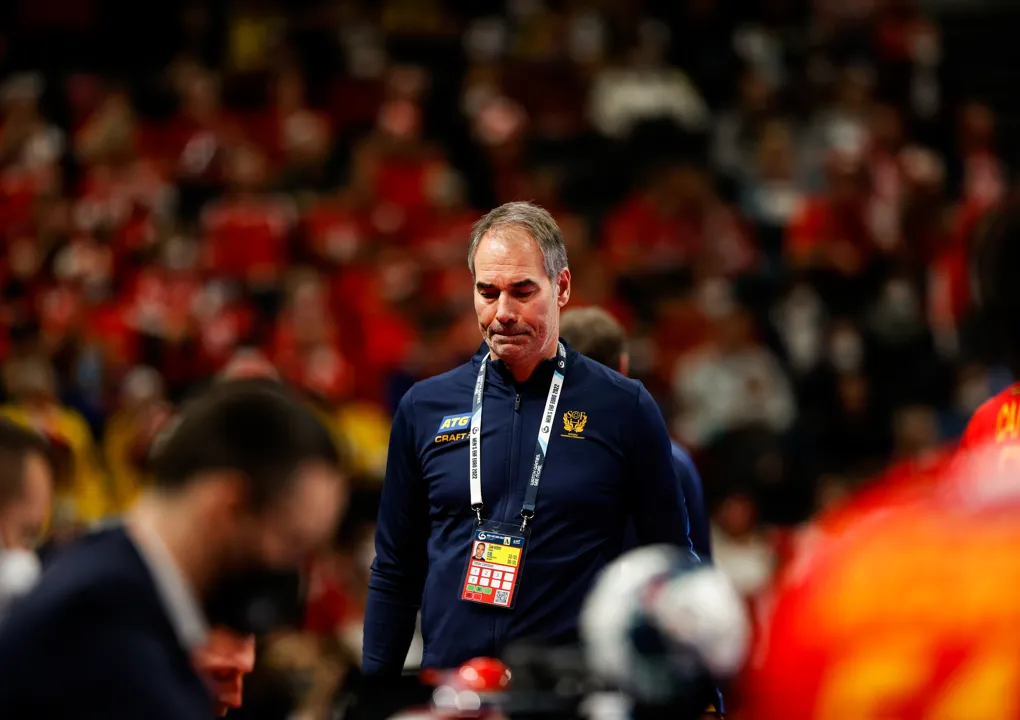As a player, the Swede won the EHF Champions League six times (with Irun, Barcelona and Portland San Antonio) and the EHF EURO three times with the famous “Bengan Boys”. Svensson is also a two-time World Champion, three-time Olympic finalist and in the EHF Hall of Fame.
In 2012, he switched from goalkeeping to goalkeeper coach, first at the German clubs Rhein-Neckar Löwen and SC Magdeburg, then at national team level for Denmark, Iceland and Sweden (since 2021). He returned to Magdeburg and was part on the staff when SCM won the EHF European League in 2021, before he went to Barça. 2022 was personally his most successful year, as his teams became EHF EURO champion (Sweden) and EHF Champions League winner (Barça), respectively.
In the EHF series here to explain, 55-year-old Svensson talks about the strategies of coaching goalkeepers, the differences in coaching young and old stoppers and the psychological effects in goalkeeper coaching.
“When you are goalkeeper coach in a club, you have many more opportunities to teach the goalkeeper. At a national team the time is limited, the base is built in the clubs, this is why a good goalkeeper needs a good goalkeeper coach at both levels to develop further,” says Svensson, who has long-term experience on both sides.
The work of a goalkeeper coach in a national team for him “is much easier”, when you work with the same goalkeepers for a long time, as then “you can directly focus on decisive little things and you do not have to start from scratch, it is important to have some routines, and you can stabilise the contact throughout the year, when they train with their clubs”.
For Svensson, the biggest task is always to be in “a sandwich position” between the head coach and the goalkeepers: “You have to explain to the head coach and the team, what would be good for the goalkeeper, for example, more shots from the wings, but then, the head coach and the rest of the team have to evaluate, whether this fits with the overall tactics and the general way the team - mainly the defence - wants to play. You have to compromise between the needs of the goalkeeper and the needs of the team. This is the classical triangle constellation between team, goalkeeper and coaches. But everybody knows that a good goalkeeper can win you the trophies.”
And of course, it is the job of the goalkeeper coach to explain to the head coach, why the goalkeeper did not save as many shots as expected – and that sometimes, the saving percentage results from difficulties in the cooperation of goalkeeper and defence, and then things need to be changed or adapted.
In his daily work, Svensson sees that a goalkeeper coach has more impact on a young goalkeeper than on an old one. “When the experienced Andreas Palicka comes to the national team, there is not much I can tell him, it is like in the saying: “It is hard to force an old dog to sit”. But on some points, I managed to change him; Andreas was always an aggressive, jumping goalkeeper, and I told him to stand longer and stand more instead of jumping, simply to prevent injuries, like in the World Championship semi-final, when he showed an extra-ordinary save by jumping, but then injured his knee and was not 100 per cent for the final.”
One major task during major tournaments such as the EHF EURO is the preparation of the goalkeepers for the next opponent, “Some goalkeepers want to know everything about their top shooters, how they shoot in which situation, this means an intense video preparation. Others like Palicka do not want to know that much, but they have such a great memory in their heads – and they rely on their feelings and experience. From my daily work with Gonzalo Perez de Vargas at Barcelona, he is the same – no one else has so many imaginary pictures of all top players in his brain like him. He says 'I rely on emotions'. I say 'I rely on science' – and then we have to compromise. Palle only wants to see five, six videos of players, as he exactly knows for example, what Dika Mem is doing – and on a versatile player like him you cannot prepare by videos. And you have to take care that you do not hand too much information to the goalkeeper, as they have to have their heads free and do not get overloaded. There is a lot of psychology in preparing a goalkeeper for a tournament.”
For Svensson, one major key is how goalkeepers focus on the ball, “Some say they only focus on the shooter, but in my opinion, this is wrong, as the ball decides everything. As a goalkeeper, you have 0.2 seconds to decide and therefore you train on how you focus your view – the ball, the arm or the shooter. To be honest, to save a shot at top international level is still something like a miracle for me. When you have a saving percentage of 35%, your team has a perfect chance to win the match, everything more than 40% is absolute world class. But even with a lower percentage you can become the hero, if you save the last three shots.”

















